Christopher Kiekintveld
Deep Learning-Based Speech and Vision Synthesis to Improve Phishing Attack Detection through a Multi-layer Adaptive Framework
Feb 27, 2024Abstract:The ever-evolving ways attacker continues to im prove their phishing techniques to bypass existing state-of-the-art phishing detection methods pose a mountain of challenges to researchers in both industry and academia research due to the inability of current approaches to detect complex phishing attack. Thus, current anti-phishing methods remain vulnerable to complex phishing because of the increasingly sophistication tactics adopted by attacker coupled with the rate at which new tactics are being developed to evade detection. In this research, we proposed an adaptable framework that combines Deep learning and Randon Forest to read images, synthesize speech from deep-fake videos, and natural language processing at various predictions layered to significantly increase the performance of machine learning models for phishing attack detection.
An Investigation into the Performances of the State-of-the-art Machine Learning Approaches for Various Cyber-attack Detection: A Survey
Feb 26, 2024Abstract:To secure computers and information systems from attackers taking advantage of vulnerabilities in the system to commit cybercrime, several methods have been proposed for real-time detection of vulnerabilities to improve security around information systems. Of all the proposed methods, machine learning had been the most effective method in securing a system with capabilities ranging from early detection of software vulnerabilities to real-time detection of ongoing compromise in a system. As there are different types of cyberattacks, each of the existing state-of-the-art machine learning models depends on different algorithms for training which also impact their suitability for detection of a particular type of cyberattack. In this research, we analyzed each of the current state-of-theart machine learning models for different types of cyberattack detection from the past 10 years with a major emphasis on the most recent works for comparative study to identify the knowledge gap where work is still needed to be done with regard to detection of each category of cyberattack
Generation of Games for Opponent Model Differentiation
Nov 28, 2023

Abstract:Protecting against adversarial attacks is a common multiagent problem. Attackers in the real world are predominantly human actors, and the protection methods often incorporate opponent models to improve the performance when facing humans. Previous results show that modeling human behavior can significantly improve the performance of the algorithms. However, modeling humans correctly is a complex problem, and the models are often simplified and assume humans make mistakes according to some distribution or train parameters for the whole population from which they sample. In this work, we use data gathered by psychologists who identified personality types that increase the likelihood of performing malicious acts. However, in the previous work, the tests on a handmade game could not show strategic differences between the models. We created a novel model that links its parameters to psychological traits. We optimized over parametrized games and created games in which the differences are profound. Our work can help with automatic game generation when we need a game in which some models will behave differently and to identify situations in which the models do not align.
Performance Comparison and Implementation of Bayesian Variants for Network Intrusion Detection
Aug 22, 2023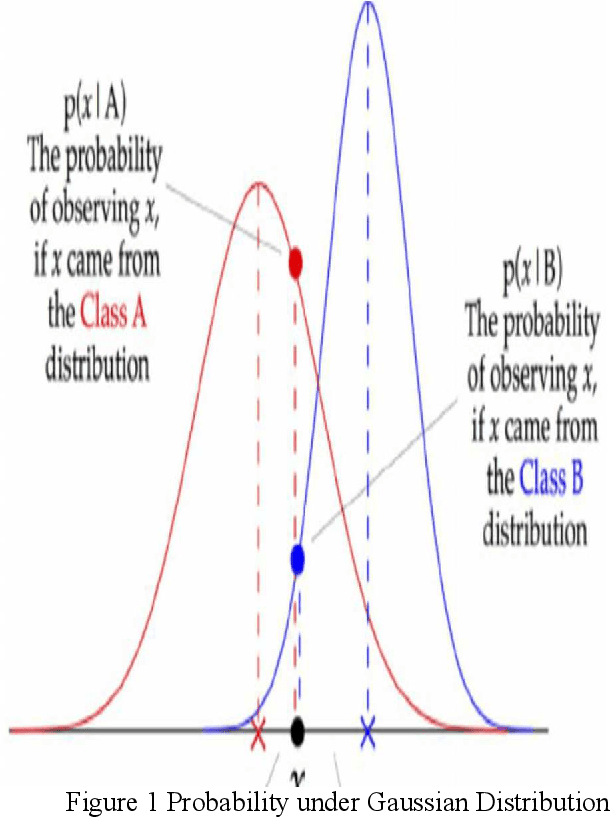
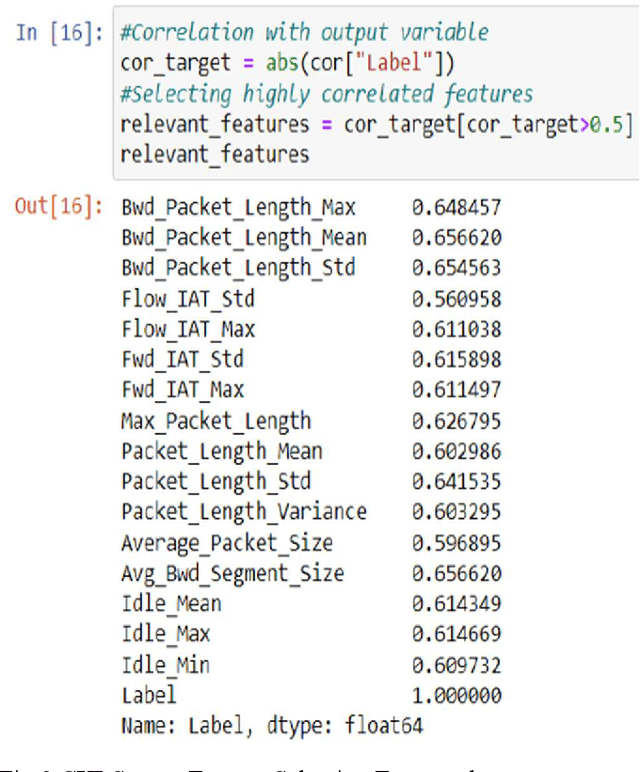

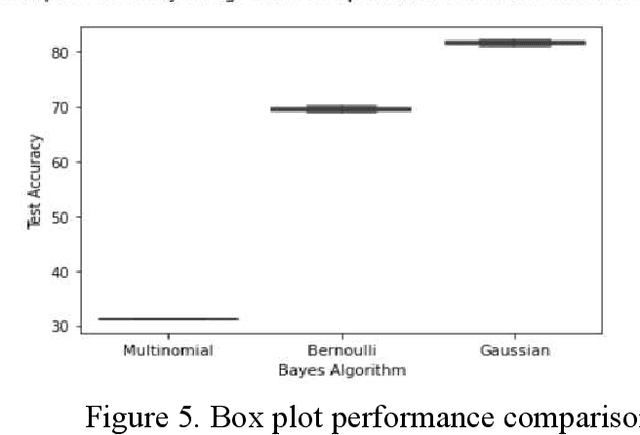
Abstract:Bayesian classifiers perform well when each of the features is completely independent of the other which is not always valid in real world application. The aim of this study is to implement and compare the performances of each variant of Bayesian classifier (Multinomial, Bernoulli, and Gaussian) on anomaly detection in network intrusion, and to investigate whether there is any association between each variant assumption and their performance. Our investigation showed that each variant of Bayesian algorithm blindly follows its assumption regardless of feature property, and that the assumption is the single most important factor that influences their accuracy. Experimental results show that Bernoulli has accuracy of 69.9% test (71% train), Multinomial has accuracy of 31.2% test (31.2% train), while Gaussian has accuracy of 81.69% test (82.84% train). Going deeper, we investigated and found that each Naive Bayes variants performances and accuracy is largely due to each classifier assumption, Gaussian classifier performed best on anomaly detection due to its assumption that features follow normal distributions which are continuous, while multinomial classifier have a dismal performance as it simply assumes discreet and multinomial distribution.
Local Context Normalization: Revisiting Local Normalization
Dec 13, 2019
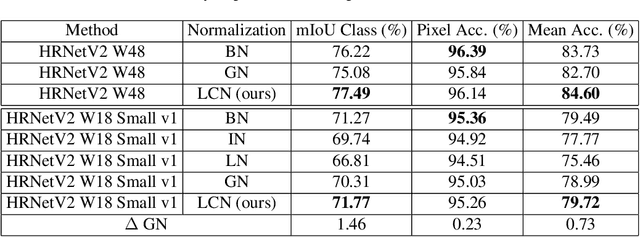
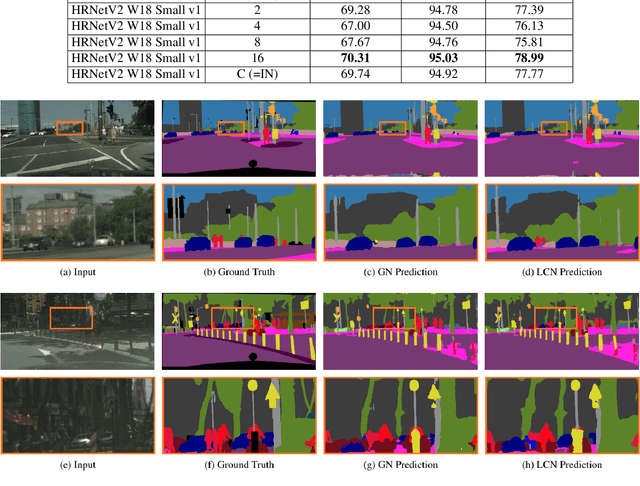

Abstract:Normalization layers have been shown to improve convergence in deep neural networks. In many vision applications the local spatial context of the features is important, but most common normalization schemes includingGroup Normalization (GN), Instance Normalization (IN), and Layer Normalization (LN) normalize over the entire spatial dimension of a feature. This can wash out important signals and degrade performance. For example, in applications that use satellite imagery, input images can be arbitrarily large; consequently, it is nonsensical to normalize over the entire area. Positional Normalization (PN), on the other hand, only normalizes over a single spatial position at a time. A natural compromise is to normalize features by local context, while also taking into account group level information. In this paper, we propose Local Context Normalization (LCN): a normalization layer where every feature is normalized based on a window around it and the filters in its group. We propose an algorithmic solution to make LCN efficient for arbitrary window sizes, even if every point in the image has a unique window. LCN outperforms its Batch Normalization (BN), GN, IN, and LN counterparts for object detection, semantic segmentation, and instance segmentation applications in several benchmark datasets, while keeping performance independent of the batch size and facilitating transfer learning.
 Add to Chrome
Add to Chrome Add to Firefox
Add to Firefox Add to Edge
Add to Edge